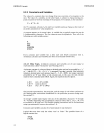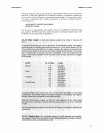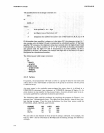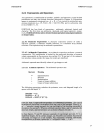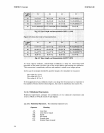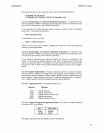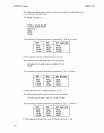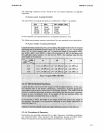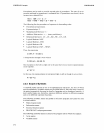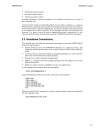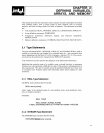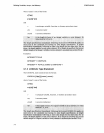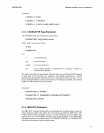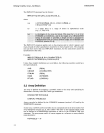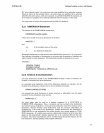
.FORTRAN
Concepts
2-12
Parentheses can be used to override
normal
rules
of
precedence. The
part
of
an
ex-
pression enclosed in parentheses
is
evaluated first.
If
parentheses are nested, the in-
nermost are evaluated first.
15/3 + 18/9 = 5 + 2 = 7
15/(3 + 18/9) = 15/(3 + 2) = 15/5 = 3
The
following lists the precedence
of
operators
in descending order:
• Parenthesized expressions
• Exponentiation: **
• Multiplication/Division: *, /
•
Addition/Subtraction:
+, - (unary
and
binary)
• Relational
Operators:
.LT.,.LE.,.EQ.,.NE.,
.GT.,.GE.
•
Logical/Boolean
.NOT.
•
Logical/Boolean
.AND.
• Logical/
Boolean.
0 R.
•
Logical/Boolean
.EQV.,
.NEQV.
Thus,
the expression
o .OR. A + 8 .GE. C
is
interpreted as
though
it
were written
o .OR. ((A +
8)
.GE. C)
One
exception to the left-to-right rule
is
the case where two
or
more
exponentiations
occur together.
A**8**C
In this case, the exponentiation
is
interpreted right-to-Ieft as
though
it were written
A *
*(8
* *C)
2.2.5 Scope of Symbols
A symbolic
name
consists
of
one
to
six alphanumeric characters, the first
of
which
must be alphabetic. Symbolic names may be
global
(that
is, they may have a scope
of
the entire
program)
or
they may be local to a
program
unit
or
statement function. A
local symbol
name
can, therefore, represent different entities in different
program
units
or
in different statement functions.
The following symbolic names are global to
the entire
program
and
cannot
be used
in a local context.
• Main
program
name
•
Subroutine
names
• External function names
• BLOCK
DATA
subprogram
names
The
following symbolic names are local to the
program
unit in which they appear:
•
Array
names
• Variable names
FORTRAN-SO



